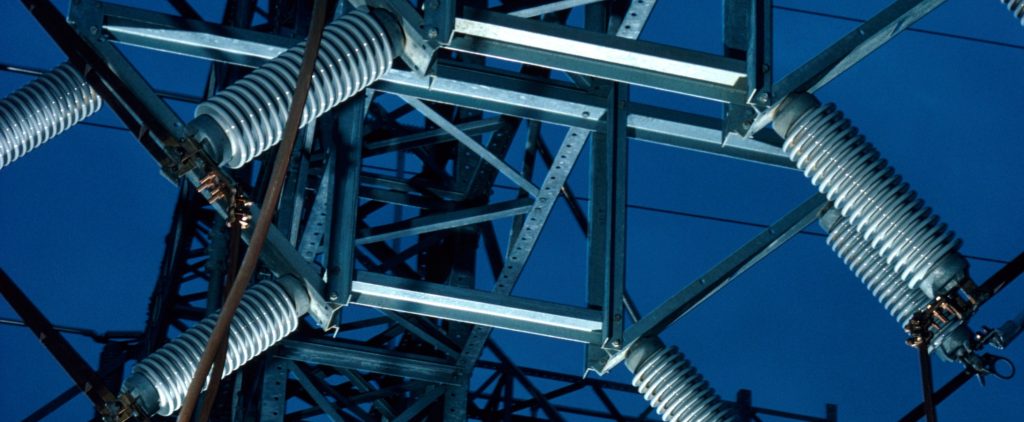A Partnership of UConn and Eversource
Eversource Energy Center
Resilience System Modeling and Economic Effects

Highlights
- Continue improving the UConn System Performance Model for all parameter interplays (weather scenarios, hardening options, local wind and soil conditions, etc.)
- Develop linkages between intervention techniques and economic analysis.
- Perform analysis for savings for the utility company, and long-term state and regional economy.
Background
Current efforts in weather and system resilience predictive models provide forecasts of adverse weather by locale and expected electricity infrastructure damages and outage durations. Economic literature generates likely economic costs by duration but is not industry specific by locale. There is a need to tie databases on industry locales to above vulnerable locales and supplement economic estimates with industry specific cost impacts. Relevant questions are:
- Can such estimates be based on current expected costs without industry reference or surveys?
- Are vulnerable firms wholly or partially offset by back-up capacity?
- If back-up generation is made available, its capital and operating costs are needed as well as its capacity to avoid outage costs by duration, industry and locale.
- Can we estimate outage costs of firms with no or insufficient backup?
- Can we estimate cost savings due to resilience interventions?
Therefore, it is critical that Eversource be able to make the economic argument that the investments in resiliency will pay off in ways that translate into a more competitive economy and defend those choices–as they imply rate increases at least in the short-run–to PURA.
The Connecticut Center for Economic Analysis (CCEA) uses the REMI model, which is a dynamic forecasting and policy analysis tool (referred to as an econometric model or a computable general equilibrium model). The model forecasts the future of a regional economy, and it predicts the effects on that same economy when the user implements a change.
The data REMI can draw is the OPM-driven system projections on disruption (as well as, if desired), pole breakage, expanded renewables, etc. with detailed county-level economic data to bridge the technical resiliency to recommendations for interventions.
To that end, work on System Resilience Modeling will continue to update and augment fragility curves by incorporating correlation of parameters, such as soil, weather, wind, pole conditions, and vegetation status. This will allow the development of multivariable fragility curve (i.e. response surface — fragility surface). Statistics of scenario-based extreme parameters will be used for outage predictions and time-series of weather events and outages will be predicted by the OPM team and will inform system model predictions as time-series of power outages under different interventions or conditions scenarios.
Comparisons of different intervention techniques will inform economic analysis (performed over 5 year periods or more). This analysis will be based on counterfactual modeling vs. pre-post analysis. Results generated by counterfactual scenarios will be compared against the observed reality (or paired factual model). The relevant metrics for comparison will be power outages or economic indicators without ETT or other interventions.
Analysis will provide a) the cost of savings for the utility company, and b) how this might affect long-term state and regional economy (societal effects, loss of business and loss of revenue).
Date for outages from 2005 to present will allow the analysis of several 5-year window scenarios including the reference (2005-2009) that had no trimming. For the economic analysis outage duration will be provided by the OPM team including shorter than 5 minute outages (likely a noisy dataset). Eversource data on customer type for outages will also be needed.
Needs
- Improve the UConn System Performance Model to incorporate all parameter interplays (weather scenarios, hardening options, local wind and soil conditions, etc.).
- Develop fragility response surfaces that capture all these parameter interplays.
- Implement REMI approach and develop linkages between intervention techniques and economic analysis.
- Perform counterfactual analysis of power outages or economic indicators without ETT or other interventions.
- Analyze savings for the utility company, and long-term state and regional economy.
- Provide operational support of Eversource incidence control managers through training to use our system modeling system.
Expected Deliverables
This work will consolidate current research on system performance modeling that has developed methods for combining weather forecasts with electric grid components via fragility curves and link to short- and long-term economic analysis. Deliverables from the new integrated project will include:
- Multivariable response surface — fragility surface with correlation of parameters (soil, weather, wind, pole conditions, vegetation status).
- Linkage between OPM predicted time-series of weather events and outages with system model predicted time-series of power outages under different interventions or conditions scenarios.
- Linkage between different intervention techniques and economic analysis.
- Counterfactual analysis of power outages or economic indicators without ETT or other interventions.
- Analysis for a) the cost of savings for the utility company, and b) how this might affect long-term state and regional economy.
- Multiple 5-year window scenarios for economic analysis.
- Production of economic forecast and dissemination to Eversource managers.
Points of Contact
- Eversource: Diego Castillo and Samuel Woolard
- UConn: Amvrossios Bagtzoglou, Ph.D.